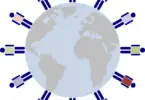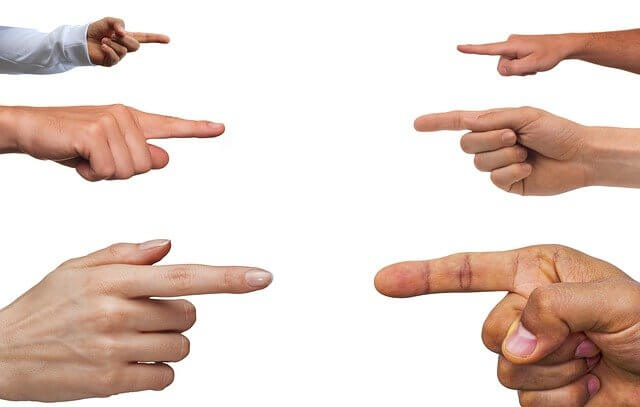The concepts of Mechanical Solidarity and Organic Solidarity in Sociology are presented by French social scientist Emile Durkheim in his doctoral thesis/book ‘Division of Labour in Society’ – in 1983. Basically, the theme of his book is the relations between individuals and society or collectivity.
The study and work of Emile Durkheim laid down the foundations of Structural Functionalism that propound that society is always in a state of equilibrium/balance/solidarity with its parts interdependent on each other.
As propounded by Structural Functionalism, a society is like a human body where all parts are different but each part is vital for the survival of the other part. Similarly, all the parts play a different role yet there is solidarity among them. However, the kind of solidarity is different in different societies. This is what Emile Durkheim has explained in his concept of mechanical and organic solidarity.
In his book, Durkheim gave his ideas of varying social solidarity between primitive societies and modern/civilized societies. As Structural Functionalism argues that there is always solidarity in society, Durkheim points out that the kind of solidarity that existed in primitive societies is different from the one existing in modern societies.
Durkheim states that the simple or primitive society is characterized by mechanical solidarity while the advanced society is characterized by organic solidarity.
Studying these two types of solidarity under their respective headings will further clarify the concepts.
Understanding Mechanical Solidarity with Examples
Mechanical solidarity is the solidarity of resemblance. This type of solidarity exists in societies where individuals do not differ from one another.
Durkheim argues that in primitive societies, there is a great resemblance between the individual members of society. They cherish the same ideas, same experiences, common values, similar beliefs, common emotions, etc. Thus, there is a sense of ‘Collective Conscience’ among the members of such a society.
Hence, a society characterized by such uniqueness has mechanical solidarity in it, according to Durkheim.
For example, today mechanical solidarity exists mostly in villages. In a village, all villagers are alike in many ways. They hold the same beliefs and values, eat the same food, follow the same customs, attend the same school, and practice the same religious rituals; thus they have mechanical solidarity.
Understanding Organic Solidarity with Examples
Organic solidarity is the opposite of mechanical solidarity. It exists in complex and diverse societies. Modern industrial societies or advanced societies today are all complex and diverse in nature where people are different from each other. The members of these societies hold different religious beliefs, and values, follow different customs, have different experiences and belong to different socioeconomic classes.
According to Durkheim, the increase in population results in the division of labour in society. With the growth of the division of labour, the collective conscience lessens and organic solidarity replaces mechanical solidarity.
There is interdependence between different parts of modern industrial societies. Different parts of society work together to maintain solidarity. This interdependence leads to organic solidarity.
An increase in organic solidarity would represent moral progress in a society stressing the higher values of equality, liberty, fraternity, and justice. Moreover, social constraints i.e. laws also play a role in enhancing organic solidarity.
For example, in Karachi reside people belonging to different classes and have different socioeconomic backgrounds. They speak different languages; have different ideas and beliefs, different experiences and values, etc. Also, there is a great division of labour in Karachi. This division brings interdependence to society. In the end, such differentiation among people results in consensus among people. This consensus achieved from differences among people is in fact organic solidarity in society.
A Case Study of Imaginary Society to Understand Mechanical and Organic Solidarity
There was a primitive society “A” where all individuals resembled each other. That was a very small society. The people of that society shared the same ideas and beliefs, cherished the same values, had similar occupations, and followed the same customs; in short, they were all alike in every aspect. There was a collective conscience among the members of the society. So much commonality among individuals resulted in the emergence of mechanical solidarity in that society.
One day, a team visited that place to set up an industry there. Now, to run that industry, more people with technical knowledge entered society from outside. When the industry flourished, it created more job opportunities. Consequently, it attracted more and more people from other societies. Now society ‘A’ started to shift from simplicity to diversity.
More people entering society resulted in an increase in population. To cater to the health requirements of the increasing population, hospitals were established. Also, with the increase in the population increased crimes. To tackle them, institutes of law enforcement were established in society ‘A’. Furthermore, to cater to the educational and technical knowledge requirements, multiple educational institutes were established. So on and so forth.
Now, with the addition of people with different socioeconomic backgrounds, beliefs, values, ideas and experiences, the members are no more alike. Thus, the collective conscience lessened gradually resulting in mutual consensus and interdependence among the people.
In short, the earlier mechanical solidarity in society ‘A’ is totally replaced with organic solidarity in the transformed complex industrial society ‘A’.







[…] Also Read: Mechanical and Organic Solidarity […]